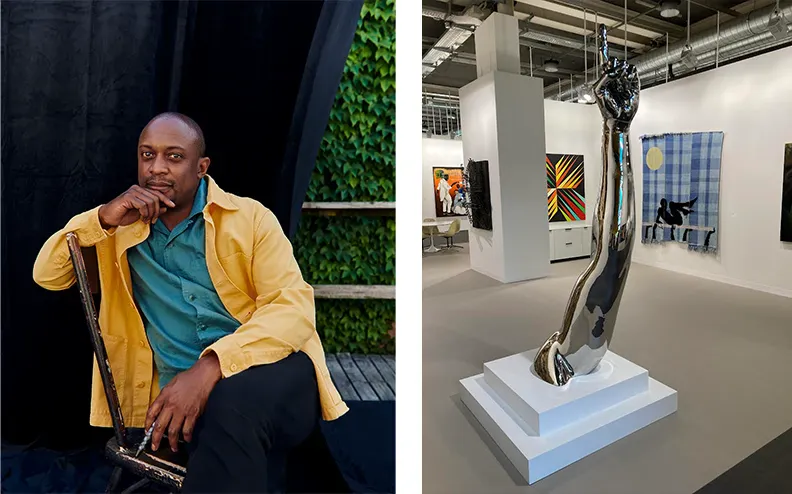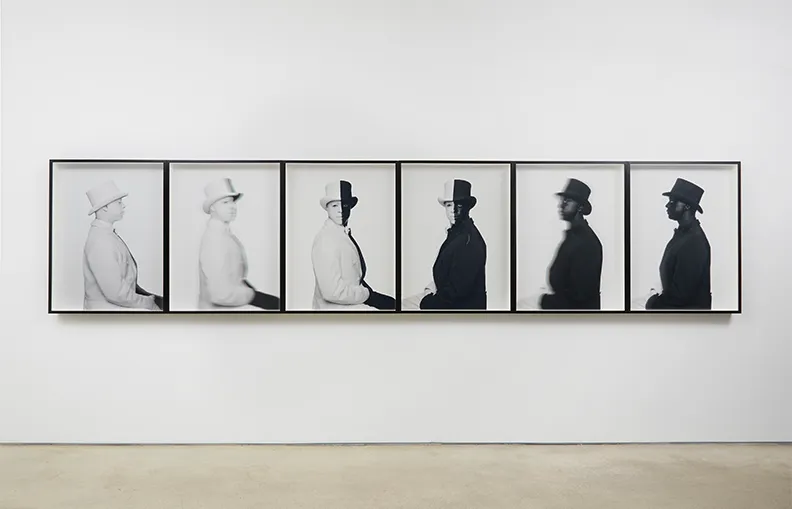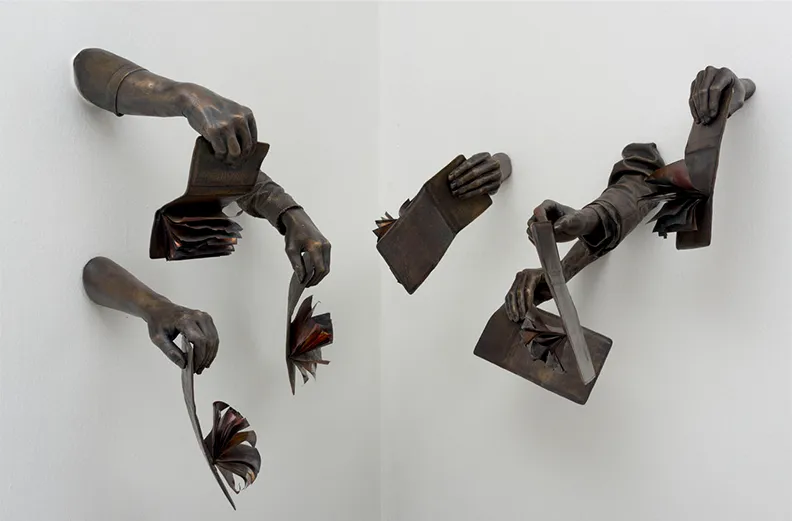The Early Years and Academic Foundations
Born in 1976 in Plainfield, New Jersey, and raised amid the dynamic culture of New York, Hank Willis Thomas was early on exposed to a melting pot of ideas and identities that deeply influenced his artistic perspective. Growing up in such a vibrant environment, he was constantly surrounded by a diversity of narratives, which spurred his initial interest in the complex interplay of identity, politics, and mass media. This early life in New York served as a rich tapestry that Thomas would later draw upon extensively in his creative pursuits, using his experiences to probe deeper into societal issues through his art.
His academic path further honed his artistic vision. Pursuing a BFA in photography and Africana studies at New York University, followed by an MFA in photography and an MA in visual criticism from the California College of the Arts, Thomas was immersed in both the technical mastery of his craft and the theoretical frameworks that would underpin his later work. His education in Africana studies opened his eyes to the historical and cultural contributions of African communities, enriching his ability to explore themes such as race and representation with a nuanced and informed approach. These experiences collectively equipped him with the tools necessary to address complex societal themes through a multidisciplinary lens.

On the left: Hank Willis, the artist. On the right: E Pluribus Unum, 2020. Stainless Steel.
Hank Willis Thomas: Engagement and Exploration through Art
Hank Willis Thomas’s work frequently addresses the representation of African Americans in media, a theme vividly explored in his noted projects like the B®anded and Unbranded series. The B®anded series, in particular, was a poignant critique of the stereotyping in advertising, where Thomas used the visual metaphor of branding—echoing the cruel history of branding slaves—to comment on the commodification of African American bodies today. This project was not just an artistic endeavor but a bold statement on the ongoing objectification and exploitation within modern media.
Following the impact of the B®anded series, Thomas launched the Unbranded series, stripping advertisements of their branding to lay bare the raw narratives beneath. By doing so, he exposed the subtle yet powerful messages embedded within these images, highlighting how cultural values and identities are shaped through commercial visuals. These projects underscore Thomas’s adeptness at uncovering the latent messages in everyday media, prompting viewers to question and critically engage with the pervasive images and narratives that shape public perception and cultural discourse.

Zero Hour (from Wayfarer), 2012. Digital chromogenic print and Plexiglas with Lumisty film, in 6 parts.
Initiatives in Social Commentary
The 2012 project, Question Bridge: Black Males, marks a significant point in Hank Willis Thomas’s career, emphasizing his dedication to fostering dialogue around African American identity. This innovative installation was inspired by a desire to challenge and expand the narrative surrounding black males in America. By collecting and presenting video interviews from African American men across a spectrum of backgrounds, Thomas and his collaborators created a platform for these individuals to share their personal experiences and insights. The project not only provided a space for underrepresented voices but also aimed to dismantle persistent stereotypes by showcasing the rich diversity and complexity of black male identity.
This initiative reflects Thomas’s broader mission to use art as a tool for social change. By facilitating conversations that might otherwise go unheard, Question Bridge sought to enhance public understanding and stimulate a broader dialogue about race, identity, and community in America. The success of this project underscores Thomas’s ability to not just create art but to spark social engagement and encourage viewers to rethink their perspectives on critical societal issues. Through such works, the artist leverages the power of visual media to foster a deeper, more nuanced understanding of American social dynamics.

The Embrace, 2023. Bronze. 20-foot tall, 32-foot diameter. Photography Credit: Wyatt Gallery
Hank Willis Thomas: Global Impact and Artistic Legacy
Throughout his career, Hank Willis Thomas has seen his artwork displayed in numerous solo and group exhibitions around the globe. The positive reception to his works across different cultural contexts points to a universal resonance with the themes he explores—themes that are pertinent and relatable to a broad audience. His exhibitions often serve as catalysts for discussion, inviting viewers to confront and engage with the challenging issues depicted in his works. By doing so, Thomas not only shares his artistic vision but also prompts individuals to reflect on the broader cultural narratives that influence their perceptions and beliefs.
One of the pinnacles of his career is his monograph, Pitch Blackness, which won the first annual Aperture West Book Prize. In this acclaimed book, Thomas delves into racial identity and representation, employing photography to dissect and challenge these complex themes. The book compiles various works that tackle historical and contemporary depictions of African Americans, offering a counter-narrative to the often one-dimensional portrayals seen in mainstream media. Through Pitch Blackness and his broader portfolio, Hank Willis Thomas has cemented his legacy as an artist who not only questions societal norms but also enriches the discourse around identity and culture in profound and enduring ways.

Die Dompas Moet Brand! (The Passbook Must Burn!), 2014. 7 life-cast arms holding passbooks; bronze and copper shim.





